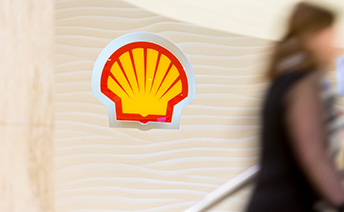Note 2 - Significant accounting policies, judgements and estimates
This Note describes Shell’s significant accounting policies, which are those relevant to an understanding of the Consolidated Financial Statements. It includes the measurement bases used in preparing the Consolidated Financial Statements. It allows for an understanding as to how transactions, other events and conditions are reported. It also describes: (a) judgements, apart from those involving estimations, that management makes in applying the policies that have the most significant effect on the amounts recognised in the Consolidated Financial Statements; and (b) estimations, including assumptions about the future, that management makes in applying the policies. The sources of estimation uncertainty that have a significant risk of a material adjustment to the carrying amounts of assets and liabilities within the next financial year are specifically identified as a significant estimate.
The accounting policies applied are consistent with those of the previous financial year except for the adoption as from January 1, 2022, of amendments to IAS 16 Property, Plant and Equipment (IAS 16) and IAS 37 Provisions, Contingent Liabilities and Contingent Assets (IAS 37).
The transition to the accounting pronouncements as listed below has no material impact.
The amendments to IAS 16 prohibit deducting from the cost of an item of property, plant and equipment under construction, any proceeds and related costs from selling items produced while bringing these types of assets to the location and condition necessary for them to be capable of operating in the manner intended by management. Instead, the proceeds and related costs are recognised in the Consolidated Statement of Income in accordance with applicable accounting policies.
Prior to these IAS 16 amendments Shell’s policy was to deduct any proceeds and related costs from selling items produced against property, plant and equipment under construction.
The amendments to IAS 37 provide additional clarity on which costs an entity includes when assessing whether a contract is onerous. The amendments specify that the cost of fulfilling a contract comprises the costs that relate directly to the contract. Those costs include both incremental costs and an allocation of other costs, as long as these relate directly to fulfilling a contract.
The Consolidated Financial Statements are presented in US dollars (dollars) and comprise the financial statements of the Company and its subsidiaries, being those entities over which the Company has control, either directly or indirectly, through exposure or rights to their variable returns and the ability to affect those returns through its power over the entities. Information about subsidiaries at December 31, 2022, can be found in Exhibit 8.1: Significant Subsidiaries and Other Related Undertakings.
Subsidiaries are consolidated from the date on which control is obtained until the date that such control ceases, using consistent accounting policies. All inter-company balances and transactions, including unrealised profits arising from such transactions, are eliminated. Unrealised losses are also eliminated unless the transaction provides evidence of an impairment of the asset transferred. Non-controlling interest represents the proportion of income, other comprehensive income and net assets in subsidiaries that are not attributable to the Company’s shareholders.
Foreign currency transactions are translated using the exchange rate at the dates of the transactions or valuation where items are remeasured. Foreign exchange gains and losses resulting from the settlement of such transactions and from the translation at quarter-end exchange rates of monetary assets and liabilities denominated in foreign currencies (including those in respect of inter-company balances, unless related to loans of a long-term investment nature) are recognised in income unless when recognised in other comprehensive income in respect of cash flow or net investment hedges. Foreign exchange gains and losses in income are presented within interest and other income or within purchases where not related to financing. Share capital issued in currencies other than the dollar is translated at the exchange rate at the date of issue.
On consolidation, assets and liabilities of non-dollar entities are translated to dollars at year-end rates of exchange, while their statements of income, other comprehensive income and cash flows are translated at quarterly average rates. The resulting translation differences are recognised as currency translation differences within other comprehensive income. Upon sale of all or part of an interest in, or upon liquidation of, an entity, the appropriate portion of cumulative currency translation differences related to that entity is generally recognised in income.
Revenue from sales of oil, natural gas, chemicals and other products is recognised at the transaction price to which Shell expects to be entitled, after deducting sales taxes, excise duties and similar levies. For contracts that contain separate performance obligations, the transaction price is allocated to those separate performance obligations by reference to their relative stand-alone selling prices.
Revenue is recognised when control of the products has been transferred to the customer. For sales by Integrated Gas and Upstream operations, this generally occurs when the product is physically transferred into a vessel, pipe or other delivery mechanism; for sales by refining operations, it is either when the product is placed onboard a vessel or offloaded from the vessel, depending on the contractually agreed terms; and for sales of oil products and chemicals, it is either at the point of delivery or the point of receipt, depending on contractual conditions.
Revenue resulting from hydrocarbon production from properties in which Shell has an interest with partners in joint arrangements is recognised on the basis of Shell’s volumes lifted and sold. Revenue resulting from the production of oil and natural gas under production-sharing contracts (PSCs) is recognised for those amounts relating to Shell’s cost recoveries and Shell’s share of the remaining production. Gains and losses on derivative contracts and the revenue and costs associated with other contracts that are classified as held primarily for the purpose of being traded are reported on a net basis in the Consolidated Statement of Income. Purchases and sales of hydrocarbons under exchange contracts that are necessary to obtain or reposition feedstocks for the refinery operations are presented net in the Consolidated Statement of Income.
Revenue resulting from arrangements that are not considered contracts with customers is presented as revenue from other sources.
Development costs that are expected to generate probable future economic benefits are capitalised as intangible assets. All other research and development expenditure is recognised in income as incurred.
Hydrocarbon exploration costs are accounted for under the successful efforts method: exploration costs are recognised in income when incurred, except that exploratory drilling costs, including in respect of the recapitalisation of the depreciation, are included in property, plant and equipment pending determination of proved reserves. Exploration costs capitalised in respect of exploration wells that are more than 12 months old are written off unless: (a) proved reserves are booked; or (b) (i) they have found commercially producible quantities of reserves; and (ii) they are subject to further exploration or appraisal activity in that either drilling of additional exploratory wells is under way or firmly planned for the near future or other activities are being undertaken to sufficiently progress the assessing of reserves and the economic and operating viability of the project.
Recognition
Property, plant and equipment comprise assets owned by Shell, assets held by Shell under lease contracts, and assets operated by Shell as contractor in PSCs. They include rights and concessions in respect of properties with proved reserves (“proved properties”) and with no proved reserves (“unproved properties”). Property, plant and equipment, including expenditure on major inspections, and intangible assets are initially recognised in the Consolidated Balance Sheet at cost where it is probable that they will generate future economic benefits. This includes capitalisation of decommissioning and restoration costs associated with provisions for asset retirement (see “provisions”), certain development costs (see “research and development”) and the effects of associated cash flow hedges (see “financial instruments”) as applicable. Interest is capitalised as an increase in property, plant and equipment, on major capital projects during construction. The accounting for exploration costs is described separately (see “exploration costs”). Intangible assets other than goodwill include liquefied natural gas (LNG) off-take and sales contracts, environmental certificates, power purchase agreements, software costs, retail customer relationships and trademarks.
Property, plant and equipment and intangible assets other than goodwill are subsequently carried at cost less accumulated depreciation, depletion and amortisation (including any impairment). Gains and losses on sale are determined by comparing the proceeds with the carrying amounts of assets sold and are recognised in income, within interest and other income.
An asset is classified as held for sale if its carrying amount will be recovered principally through sale rather than through continuing use, which is when the sale is highly probable, and it is available for immediate sale in its present condition subject only to terms that are usual and customary for sales of such assets. Assets classified as held for sale are measured at the lower of the carrying amount upon classification and the fair value less costs to sell. Assets classified as held for sale and the associated liabilities are presented separately from other assets and liabilities in the Consolidated Balance Sheet. Once assets are classified as held for sale, property, plant and equipment and intangible assets other than goodwill are no longer subject to depreciation or amortisation.
Depreciation, depletion and amortisation
Property, plant and equipment related to hydrocarbon production activities are in principle depreciated on a unit-of-production basis over the proved developed reserves of the field concerned, other than assets whose useful lives differ from the lifetime of the field which are depreciated applying the straight-line method. However, for certain Integrated Gas and Upstream assets, the use for this purpose of proved developed reserves, which are determined using the Securities and Exchange Commission (SEC) mandated yearly average oil and gas prices, would result in depreciation charges for these assets which do not reflect the pattern in which their future economic benefits are expected to be consumed as, for example, it may result in assets with long-term expected lives having accelerated or being fully depreciated within one year. Therefore, in these instances, other approaches are applied to determine a reserves base for the purpose of calculating depreciation, such as using management’s expectations of future oil and gas prices rather than yearly average prices and using total proved reserves to provide a phasing of periodic depreciation charges that more appropriately reflects the expected utilisation of the assets concerned. (See Note 12)
Rights and concessions in respect of proved properties are depleted on the unit-of-production basis over the total proved reserves of the relevant area. Where individually insignificant, unproved properties may be grouped and depreciated based on factors such as the average concession term and past experience of recognising proved reserves.
Property, plant and equipment held under lease contracts, capitalised LNG off-take and sales contracts and power purchase agreements are depreciated or amortised over the term of the respective contract. Other property, plant and equipment and intangible assets other than goodwill are depreciated or amortised on a straight-line basis over their estimated useful lives. They include energy and chemicals parks (for which the useful life is generally 20 years), retail service stations (for which the useful life is generally 15 years), onshore power infrastructure (for which the useful life is generally 30-35 years), offshore wind assets (for which the useful life is generally 25-30 years) and major inspection costs, which are depreciated over the estimated period before the next planned major inspection (three to five years).
On classification of an asset as held for sale, depreciation ceases.
Estimates of the useful lives and residual values of property, plant and equipment and intangible assets other than goodwill are reviewed annually and adjusted if appropriate.
Impairment
Intangible assets other than goodwill and assets other than unproved properties (see “Exploration costs”) are tested for impairment whenever events or changes in circumstances indicate that the carrying amounts for those assets may not be recoverable. If any such indication of impairment exists, the carrying amounts of those assets are written down to their recoverable amount, which is the higher of fair value less costs of disposal (see “Fair value measurements”) and value in use.
Value in use is determined as the amount of estimated risk-adjusted discounted future cash flows. For this purpose, assets are grouped into cash-generating units based on separately identifiable and largely independent cash inflows. Estimates of future cash flows used in the evaluation of impairment of assets are made using management’s forecasts of commodity prices, market supply and demand, potential costs associated with operational greenhouse gas (GHG) emissions, mainly related to CO2, and forecast product and refining margins. In addition, management takes into consideration the expected useful lives of the manufacturing facilities, exploration and production assets, and expected production volumes. The latter takes into account assessments of field and reservoir performance and includes expectations about both proved reserves and volumes that are expected to constitute proved reserves in the future (unproved volumes), which are risk-weighted utilising geological, production, recovery and economic projections. Cash flow projections are based on management’s most recent operating plan that represents management’s best estimate and are risked as appropriate. The discount rate is based on a nominal post-tax weighted average cost of capital (WACC). Prior to 2021, cash flow estimates were discounted at a rate based on Shell’s marginal cost of debt. The change in discount rate to a nominal post-tax WACC has been reflected in a commensurate manner in the risk adjustments to cash flow projections. Using a post-tax discount rate to calculate value in use does not result in a materially different outcome than using a pre-tax discount rate. (See Note 12)
Impairments are reversed as applicable to the extent that the events or circumstances that triggered the original impairment have changed.
Impairment losses and reversals are reported within depreciation, depletion and amortisation.
Upon classification of an asset as held for sale, the carrying amount is impaired if this exceeds the fair value less costs to sell.
Judgements and estimates
Proved oil and gas reserves
Unit-of-production depreciation, depletion and amortisation charges are principally measured based on management’s estimates of proved developed oil and gas reserves. Also, exploration drilling costs are capitalised pending the results of further exploration or appraisal activity (successful efforts method), which may take place for several years before the final investment decision on a development project is taken and before any related proved reserves can be booked.
Proved reserves are estimated by internal qualified professionals. The proved reserves are estimated with reasonable certainty by analysis of available geological and engineering data at the time of the estimation, and only include volumes for which access to market is assured with reasonable expectation. Yearly average oil and gas prices are used for the estimation of proved reserves unless prices are defined by contractual arrangements, excluding escalations based upon future conditions. Proved reserves are subject to regular revision, both upward or downward, based on new information from the drilling of additional wells, observation of long-term reservoir performance under producing conditions, updates of development plans and changes in economic factors, including product prices, contract terms, legislation or development plans.
Changes to estimates of proved developed reserves affect prospectively the amounts of depreciation, depletion and amortisation charged and, consequently, the carrying amounts of exploration and production assets. Generally, in the normal course of business the diversity of the asset portfolio will limit the net effect of such revisions. The outcome of, or assessment of plans for, exploration or appraisal activity may result in the related capitalised exploration drilling costs being recognised in income in that period.
Judgement is involved in determining when to use an alternative reserves base in order to appropriately reflect the expected utilisation of the assets concerned (see “Depreciation, depletion and amortisation”).
Information about the carrying amounts of exploration and production assets and the amounts charged to income, including depreciation, depletion and amortisation and the quantitative impact of the use of an alternative reserves base, is presented in Note 12.
Impairment
For the purposes of determining whether impairment of assets has occurred, and the extent of any impairment loss or its reversal, the key assumptions management uses in estimating risk-adjusted future cash flows for value in use measures are future oil and gas prices and refining margins. In addition, management uses other assumptions such as potential costs associated with operational GHG emissions and expected production volumes appropriate to the local circumstances and environment. These assumptions and the judgements of management that are based on them are subject to change as new information becomes available. Changes in assumptions could affect the carrying amounts of assets, and any impairment losses and reversals will affect income. Changes in economic conditions can affect the rate used to discount future cash flow estimates or the risk-adjustment in the future cash flows. Judgement is applied to conclude whether changes in assumptions or economic conditions are an indicator that an asset may be impaired or that an impairment loss recognised in prior periods may no longer exist, or may have decreased.
Expected production volumes, which comprise proved reserves and unproved volumes, are used for impairment testing because management believes this to be the most appropriate indicator of expected future cash flows. Reserves estimates are inherently imprecise. Furthermore, projections about unproved volumes are based on information that is necessarily less robust than that available for mature reservoirs.
Estimation is involved with respect to the expected life of energy and chemicals parks, and including management’s view on the future development of refining margins.
The determination of cash-generating units requires judgement. Changes in this determination could impact the calculation of value in use and therefore the conclusion on the recoverability of assets’ carrying amounts when performing an impairment test.
Judgement, which is subject to change as new information becomes available, can be required in determining when an asset is classified as held for sale. A change in that judgement could result in impairment charges affecting income, depending on whether classification requires a write-down of the asset to its fair value less costs to sell.
In assessing the value in use, the estimated risk-adjusted future post-tax cash flows are discounted to their present value using a post-tax discount rate that reflects Shell’s post-tax WACC. The discount rate applied does not reflect asset-specific risks for which future cash flow estimates have been adjusted.
Significant estimates
Assumptions about future commodity prices and refining margins used in the impairment testing in, respectively, Integrated Gas and Upstream and Chemicals and Products (see Note 12) are regularly assessed by management, noting that management does not necessarily consider short-term increases or decreases in prices as being indicative of long-term levels.
The price methodology applied is based on Shell management’s understanding and interpretation of demand and supply fundamentals in the near term, taking into account various other factors such as industry rationalisation and energy transition in the long term.
Future commodity prices and refining margins used in impairment testing provide a source of estimation uncertainty as referred to in paragraph 125 of IAS 1 Presentation of Financial Statements (IAS 1.125).
Information about the carrying amounts of assets and impairments and their sensitivity to changes in significant estimates is presented in Notes 11 and 12.
Goodwill is initially measured as the excess of the aggregate of the consideration transferred and the amount recognised for any non-controlling interest over the fair value of the identifiable assets acquired and liabilities assumed in a business combination at the acquisition date. The amount recognised for any non-controlling interest is measured as a percentage of the identified net assets of the acquiree based on the present ownership’s proportionate share. At the acquisition date, acquired goodwill is allocated to each cash-generating unit (CGU), or groups of CGUs, expected to benefit from the combination’s synergies. The CGU to which goodwill is allocated represents the lowest level at which the goodwill will be monitored and managed.
Goodwill is not amortised and is subsequently measured at the initial amount recognised less any accumulated impairment losses.
Impairment
The carrying amount of goodwill is tested for impairment at least annually. Impairment is determined for goodwill by assessing the recoverable amount of each CGU to which the goodwill relates. An impairment loss is recognised when the CGU’s recoverable amount is lower than its carrying amount.
Previously recognised impairment losses of goodwill are not reversed subsequently.
Leases
A contract, or part of a contract, that conveys the right to control the use of an identified asset for a period of time in exchange for payments to be made to the owners (lessors) is accounted for as a lease. Contracts are assessed to determine whether a contract is, or contains, a lease at the inception of a contract or when the terms and conditions of a contract are significantly changed. The lease term is the non-cancellable period of a lease, together with contractual options to extend or to terminate the lease early, where it is reasonably certain that an extension option will be exercised or a termination option will not be exercised.
At the commencement of a lease contract, a right-of-use asset and a corresponding lease liability are recognised, unless the lease term is 12 months or less. The commencement date of a lease is the date on which the underlying asset is made available for use. The lease liability is measured at an amount equal to the present value of the lease payments during the lease term that are not paid at that date. The lease liability includes contingent rentals and variable lease payments that depend on an index, rate, or where they are fixed payments in substance. The lease liability is remeasured when the contractual cash flows of variable lease payments change due to a change in an index or rate when the lease term changes following a reassessment.
Lease payments are discounted using the interest rate implicit in the lease. If that rate is not readily available, the incremental borrowing rate is applied. The incremental borrowing rate reflects the rate of interest that the lessee would have to pay to borrow over a similar term, with a similar security, the funds necessary to obtain an asset of a similar nature and value to the right-of-use asset in a similar economic environment.
In general, a corresponding right-of-use asset is recognised for an amount equal to each lease liability, adjusted by the amount of any pre-paid lease payment relating to the specific lease contract. The depreciation on right-of-use assets is recognised in income unless capitalised as exploration drilling cost (see “exploration cost”) or capitalised when the right-of-use asset is used to construct another asset.
Where Shell is the lessor in a lease arrangement at inception, the lease arrangement will be classified as a finance lease or an operating lease. Classification is based on the extent to which the risks and rewards incidental to ownership of the underlying asset lie with the lessor or the lessee.
Where Shell, usually in its capacity as operator, has entered into a lease contract on behalf of a joint arrangement, a lease liability is recognised to the extent that Shell has primary responsibility for the lease liability. A finance sublease is subsequently recognised if the related right-of-use asset is subleased to the joint arrangement. This is usually the case when the joint arrangement has the right to direct the use and obtains substantially all of the economic benefits from using the asset.
Impairment of the right-of-use asset
Right-of-use assets are subject to existing impairment requirements as set out in “Property, plant and equipment”, above, and as presented in Note 12.
Judgements and estimates
A lease term includes optional lease periods where it is reasonably certain Shell will exercise the option to extend or not exercise the option to terminate the lease. Determination of the lease term is subject to judgement and has an impact on the measurement of the lease liability and related right-of-use asset. When assessing the lease term at the commencement date, Shell takes into consideration the broader economics of the contract. Reassessment of the lease term is performed upon changes in circumstances that may affect the probability that an option to extend or to terminate the lease will be exercised.
Where the rate implicit in the lease is not readily available, an incremental borrowing rate is applied. This incremental borrowing rate reflects the rate of interest that the lessee would have to pay to borrow over a similar term, with a similar security, the funds necessary to obtain an asset of a similar nature and value to the right-of-use asset in a similar economic environment. Determination of the incremental borrowing rate requires estimation.
Arrangements under which Shell has contractually agreed to share control (see “Nature of the Consolidated Financial Statements” for the definition of control) with another party or parties are joint ventures where the parties have rights to the net assets of the arrangement, or joint operations where the parties have rights to the assets and obligations for the liabilities relating to the arrangement. Investments in entities over which Shell has the right to exercise significant influence but neither control nor joint control are classified as associates. Information about incorporated joint arrangements and associates at December 31, 2022, can be found in Exhibit 8.1: Significant Subsidiaries and Other Related Undertakings.
Investments in joint ventures and associates are accounted for using the equity method, under which the investment is initially recognised at cost and subsequently adjusted for the Shell share of post-acquisition income less dividends received and the Shell share of other comprehensive income and other movements in equity, together with any loans of a long-term investment nature. Where necessary, adjustments are made to the financial statements of joint ventures and associates to bring the accounting policies used into line with those of Shell. In an exchange of assets and liabilities for an interest in a joint venture, the non-Shell share of any excess of the fair value of the assets and liabilities transferred over the pre-exchange carrying amounts is recognised in income. Unrealised gains on other transactions between Shell and its joint ventures and associates are eliminated to the extent of Shell’s interest in them; unrealised losses are treated similarly but may also result in an assessment of whether the asset transferred is impaired.
Shell recognises its assets and liabilities relating to its interests in joint operations, including its share of assets held jointly and liabilities incurred jointly with other partners.
Inventories are stated at cost or net realisable value, whichever is lower. Cost comprises direct purchase costs (including transportation), and associated costs incurred in bringing inventories to their present condition and location, and is determined using the first-in, first-out (FIFO) method for oil, gas and chemicals and by the weighted average cost method for materials.
The charge for current tax is calculated based on the income reported by the Company and its subsidiaries, as adjusted for items that are non-taxable or disallowed and using rates that have been enacted or substantively enacted by the balance sheet date.
Deferred tax is determined, using the liability method, on temporary differences arising between the tax bases of assets and liabilities and their carrying amounts in the Consolidated Balance Sheet and on unused tax losses and credits carried forward.
Deferred tax assets and liabilities are calculated using the enacted or substantively enacted rates that are expected to apply when an asset is realised or a liability is settled. They are not recognised where they arise on the initial recognition of goodwill or of an asset or liability in a transaction (other than in a business combination) that, at the time of the transaction, affects neither accounting nor taxable profit, or in respect of taxable temporary differences associated with subsidiaries, joint ventures and associates where the reversal of the respective temporary difference can be controlled by Shell and it is probable that it will not reverse in the foreseeable future.
Deferred tax assets are recognised to the extent that it is probable that future taxable profits will be available against which the deductible temporary differences, unused tax losses and credits carried forward can be utilised.
Income tax receivables and payables as well as deferred tax assets and liabilities include provisions for uncertain income tax positions/treatments.
Income taxes are recognised in income except when they relate to items recognised in other comprehensive income, in which case the tax is recognised in other comprehensive income. Income tax assets and liabilities are presented separately in the Consolidated Balance Sheet except where there is a right of offset within fiscal jurisdictions and an intention to settle such balances on a net basis.
Judgements and estimates
Tax liabilities are recognised when it is considered probable that there will be a future outflow of funds to a taxing authority. In such cases, provision is made for the amount that is expected to be settled, where this can be reasonably estimated. Provisions for uncertain income tax positions/treatments are measured at the most likely amount or the expected value, whichever method is more appropriate. Generally, uncertain tax treatments are assessed on an individual basis, except where they are expected to be settled collectively. It is assumed that taxing authorities will examine positions taken if they have the right to do so and that they have full knowledge of the relevant information. A change in estimate of the likelihood of a future outflow and/or in the expected amount to be settled would be recognised in income in the period in which the change occurs. This requires the application of judgement as to the ultimate outcome, which can change over time depending on facts and circumstances. Judgements mainly relate to transfer pricing, including inter-company financing, interpretation of PSCs, expenditure deductible for tax purposes and taxation arising on disposal.
Deferred tax assets are recognised only to the extent it is considered probable that those assets will be recoverable. This involves an assessment of when those assets are likely to reverse, and a judgement as to whether or not there will be sufficient taxable profits available to offset the assets when they do reverse. This requires assumptions regarding future profitability and is therefore inherently uncertain. To the extent assumptions regarding future profitability change, there can be an increase or decrease in the amounts recognised in respect of deferred tax assets as well as in the amounts recognised in income in the period in which the change occurs.
Taxation information, including charges and deferred tax assets and liabilities, is presented in Note 22. Income taxes include taxes at higher rates levied on income from certain Integrated Gas and Upstream activities.
Benefits in the form of retirement pensions and health care and life insurance are provided to certain employees and retirees under defined benefit and defined contribution plans.
Obligations under defined benefit plans are calculated annually by independent actuaries using the projected unit credit method, which takes into account employees’ years of service and, for pensions, average or final pensionable remuneration, and are discounted to their present value using interest rates of high-quality corporate bonds denominated in the currency in which the benefits will be paid and of a duration consistent with the plan obligations. Where plans are funded, payments are made to independently managed trusts; assets held by those trusts are measured at fair value. Defined benefit plan surpluses are recognised as assets to the extent that they are considered recoverable, which is generally by way of a refund or lower future employer contributions.
The amounts recognised in income in respect of defined benefit plans mainly comprise service cost and net interest. Service cost comprises principally the increase in the present value of the obligation for benefits resulting from employee service during the period (current service cost) and also amounts relating to past service and settlements or amendments of plans. Plan amendments are changes to benefits and are generally recognised when all legal and regulatory approvals have been received and the effects have been communicated to members. Net interest is calculated using the net defined benefit liability or asset matched against the discount rate yield curve at the beginning of each year for each plan. Remeasurements of the net defined benefit liability or asset resulting from actuarial gains and losses, and the return on plan assets excluding the amount recognised in income, are recognised in other comprehensive income.
For defined contribution plans, pension expense represents the amount of employer contributions payable for the period.
Significant judgements and estimates
Defined benefit obligations and plan assets, and the resulting liabilities and assets that are recognised, require significant estimation as these are subject to volatility as (actuarial) assumptions regarding future outcomes and market values change. Substantial judgement is required in determining the actuarial assumptions, which vary for the different plans to reflect local conditions but are determined under a common process in consultation with independent actuaries. The assumptions applied in respect of each plan are reviewed annually and adjusted where necessary to reflect changes in experience and actuarial recommendations.
Actuarial assumptions applied in determining defined benefit obligations provide a source of estimation uncertainty as referred to in IAS 1.125.
Information about the amounts reported in respect of defined benefit pension plans, assumptions applicable to the principal plans and their sensitivity to changes in significant estimates is presented in Note 23.
Provisions are recognised at the balance sheet date at management’s best estimate of the expenditure required to settle the present obligation. Non-current amounts are discounted at a rate intended to reflect the time value of money. The carrying amounts of provisions and the discount rate applied are regularly reviewed and adjusted for new facts or changes in law, technology or financial markets.
Provisions for decommissioning and restoration costs, which arise principally in connection with hydrocarbon production facilities, oil products manufacturing facilities and pipelines, are measured on the basis of current requirements, technology and price levels; the present value is calculated using amounts discounted over the useful economic life of the assets. The liability is recognised (together with a corresponding amount as part of the related property, plant and equipment) once a legal or constructive obligation arises to dismantle an item of property, plant and equipment and to restore the site on which it is located and when a reasonable estimate can be made. The effects of changes resulting from revisions to the timing or the amount of the original estimate of the provision are reflected on a prospective basis, generally by adjustment to the carrying amount of the related property, plant and equipment. However, where there is no related asset, or the change reduces the carrying amount to nil, the effect, or the amount in excess of the reduction in the related asset to nil, is recognised in income.
Shell reviews its energy and chemicals parks on a regular basis to determine whether any changes in assumptions, including expected life, trigger the need to recognise a provision for decommissioning and restoration.
Redundancy provisions are recognised when a detailed formal plan identifies the business or part of the business concerned, the location and number of employees affected, a detailed estimate of the associated costs and an appropriate timeline, and the employees affected have been notified of the plan’s main features.
An onerous contract provision is recognised when the unavoidable cost of meeting the obligations under the contract exceeds the economic benefits expected to be received under it. The unavoidable cost under a contract is the lower of the cost of fulfilling the contract and any compensation or penalties arising from failure to fulfil it. The cost of fulfilling a contract comprises the costs that relate directly to the contract. Before an onerous provision is recognised Shell first recognises any impairment loss that has occurred on assets dedicated to that contract.
Other provisions are recognised in income in the period in which an obligation arises and the amount can be reasonably estimated. Provisions are measured based on current legal requirements and existing technology where applicable. Recognition of any joint and several liability is based on management’s best estimate of the final pro rata share of the liability. Provisions are determined independently of expected insurance recoveries. Recoveries are recognised when virtually certain of realisation.
Estimates
Estimates of provisions for future decommissioning and restoration costs are recognised and based on current legal and constructive requirements, technology and price levels. Because actual cash outflows can differ from estimates due to changes in laws, regulations, public expectations, technology, prices and conditions, and can take place many years in the future, the carrying amounts of provisions are regularly reviewed and adjusted to take account of such changes.
Significant estimate
The discount rate applied to reflect the time value of money in the carrying amount of provisions requires estimation. The discount rate used in the calculation of provisions is the pre-tax rate that reflects current market assessments of the time value of money. Generally, the market assessments of the time value of money can be reflected in the risk-free rate and given the long-term investment nature of oil and gas business, Shell considers it appropriate to use the 20-year US Treasury bond yield return as the risk-free rate. The discount rate applied is reviewed regularly and adjusted following changes in market rates.
The discount rate applied to determine the carrying amount of provisions provides a source of estimation uncertainty as referred to in IAS 1.125.
Information about decommissioning and restoration provisions and their sensitivity to changes in estimates is presented in Note 24.
Financial assets and liabilities are presented separately in the Consolidated Balance Sheet except where there is a legally enforceable right of offset and Shell has the intention to settle on a net basis or realise the asset and settle the liability simultaneously.
Financial assets
Financial assets are classified at initial recognition and subsequently measured at amortised cost, fair value through other comprehensive income or fair value through profit or loss. The classification of financial assets is determined by the contractual cash flows and where applicable the business model for managing the financial assets.
Debt instruments are measured at amortised cost, if the objective of the business model is to hold the financial asset in order to collect contractual cash flows and the contractual terms give rise to cash flows that are solely payments of principal and interest. It is initially recognised at fair value plus or minus transaction costs that are directly attributable to the acquisition or issue of the financial asset. Subsequently, the financial asset is measured using the effective interest method less any impairment. Gains and losses are recognised in profit or loss when the asset is derecognised, modified or impaired.
All equity instruments and other debt instruments are recognised at fair value. For equity instruments, on initial recognition, an irrevocable election (on an instrument-by-instrument basis) can be made to designate these as at fair value through other comprehensive income instead of fair value through profit or loss. Dividends received on equity instruments are recognised as other income in profit or loss when the right of payment has been established, except when Shell benefits from such proceeds as a recovery of part of the cost of the financial asset, in which case such gains are recorded in other comprehensive income.
Investments in securities
Investments in securities (“securities”) comprise equity and debt securities. Equity securities are carried at fair value. Generally, unrealised holding gains and losses are recognised in other comprehensive income. On sale, net gains and losses previously accumulated in other comprehensive income are transferred to retained earnings. Debt securities are generally carried at fair value with unrealised holding gains and losses recognised in other comprehensive income. On sale, net gains and losses previously accumulated in other comprehensive income are recognised in income.
Impairment of financial assets
The expected credit loss model is applied for recognition and measurement of impairments in financial assets measured at amortised cost or at fair value through other comprehensive income. The expected credit loss model is also applied for financial guarantee contracts to which IFRS 9 applies and which are not accounted for at fair value through profit or loss. The loss allowance for the financial asset is measured at an amount equal to the 12-month expected credit losses. If the credit risk on the financial asset has increased significantly since initial recognition, the loss allowance for the financial asset is measured at an amount equal to the lifetime expected credit losses. Changes in loss allowances are recognised in profit or loss. For trade receivables, a simplified impairment approach is applied recognising expected lifetime losses from initial recognition.
Cash and cash equivalents
Cash and cash equivalents comprise cash at bank and in hand, including offsetting bank overdrafts, short-term bank deposits, money market funds, reverse repos and similar instruments that generally have a maturity of three months or less at the date of purchase.
Financial liabilities
Financial liabilities are measured at amortised cost, unless they are required to be measured at fair value through profit or loss, such as instruments held for trading, or Shell has opted to measure them at fair value through profit or loss. Debt and trade payables are recognised initially at fair value based on amounts exchanged, net of transaction costs, and subsequently at amortised cost except for fixed rate debt subject to fair value hedging which is remeasured for the hedged risk (see below). Interest expense on debt is accounted for using the effective interest method, and other than interest capitalised, is recognised in income. For financial liabilities that are measured under the fair value option, the change in the fair value related to own credit risk is recognised in other comprehensive income. The remaining fair value change is recognised at fair value through profit or loss.
Derivative contracts and hedges
Derivative contracts are used in the management of interest rate risk, foreign exchange risk, commodity price risk, and foreign currency cash balances. Derivatives that are not closely related to the host contract in terms of economic characteristics and risks and the host contract of which is not a financial asset are separated from their host contract and recognised at fair value with the associated gains and losses recognised in income.
Contracts to buy or sell a non-financial item that can be settled net in cash are accounted for as financial instruments, with the exception of those contracts that were entered into and continue to be held for the purpose of the receipt or delivery of a non-financial item in accordance with Shell’s expected purchase, sale or usage requirements. Gains or losses arising from changes in the fair value of derivatives that are not designated as effective hedging instruments are recognised in income.
Certain derivative contracts qualify and are designated either: as a fair value hedge of the change in fair value of a recognised asset or liability or an unrecognised firm commitment; or as a cash flow hedge for the change in cash flows to be received or paid relating to a recognised asset or liability or a highly probable forecast transaction; or as a net investment hedge of the change in foreign exchange rates associated with net investments in foreign operations with a different functional currency than Shell’s functional currency.
A change in the fair value of a hedging instrument designated as a fair value hedge is recognised in income, together with the consequential adjustment to the carrying amount of the hedged item. The effective portion of a change in fair value of a derivative contract designated as a cash flow hedge is recognised in other comprehensive income until the hedged transaction occurs; any ineffective portion is recognised in income. Where the hedged item is a non-financial asset or liability, the amount in accumulated other comprehensive income is transferred to the initial carrying amount of the asset or liability (reclassified to the balance sheet); a net investment hedge is accounted for similarly to a cash flow hedge. Gains or losses on the hedging instrument relating to the effective portion of the hedge are recognised in other comprehensive income while any gains or losses relating to the ineffective portion are recognised in the income statements. On disposal of the foreign operation, the cumulative value of any such gains or losses recorded in other comprehensive income is reclassified to the income statement.
The effective portion of a change due to retranslation at quarter-end exchange rates in the carrying amount of debt and the principal amount of derivative contracts used to hedge net investments in foreign operations is recognised in other comprehensive income until the related investment is sold or liquidated; any ineffective portion is recognised in income.
All relationships between hedging instruments and hedged items are documented, as well as risk management objectives and strategies for undertaking hedge transactions. The effectiveness of hedges is also continually assessed and hedge accounting is discontinued when there is a change in the risk management strategy.
Unless designated as hedging instruments, contracts to sell or purchase non-financial items that can be settled net as if the contracts were financial instruments and that do not meet expected own-use requirements (typically, forward sale and purchase contracts for commodities in trading operations), and contracts that are or contain written options, are recognised at fair value; associated gains and losses are recognised in income.
Derivatives that are held primarily for the purpose of trading are presented as current in the Consolidated Balance Sheet.
Judgement
Judgement is required to determine whether contracts to buy or sell LNG are capable of being settled on a net basis. Due to the limited liquidity in the LNG market and the lack of net settlement history, contracts to buy or sell LNG are not considered capable of being settled on a net basis. As a result, these contracts are accounted for on an accrual basis and not as a financial instrument.
Fair value measurements are estimates of the amounts for which assets or liabilities could be transferred at the measurement date, based on the assumption that such transfers take place between participants in principal markets and, where applicable, taking highest and best use into account.
Estimate
Where available, fair value measurements are derived from prices quoted in active markets for identical assets or liabilities. In the absence of such information, other observable inputs are used to estimate fair value. Inputs derived from external sources are corroborated or otherwise verified, as appropriate. In the absence of publicly available information, fair value is determined using estimation techniques that take into account market perspectives relevant to the asset or liability, in as far as they can reasonably be ascertained, based on predominantly unobservable inputs. For derivative contracts where publicly available information is not available, fair value estimations are generally determined using models and other valuation methods, the key inputs for which include future prices, volatility, price correlation, counterparty credit risk and market liquidity, as appropriate; for other assets and liabilities, fair value estimations are generally based on the net present value of expected future cash flows.
The fair value of share-based compensation expense arising from the Performance Share Plan (PSP) and the Long-term Incentive Plan (LTIP) – Shell’s main equity-settled plans – is estimated using the average Monte Carlo fair values and is recognised in income from the date of grant over the vesting period with a corresponding increase directly in equity. The model projects and averages the results for a range of potential outcomes for the vesting conditions, the principal assumptions for which are the share price volatility and dividend yields for Shell and four of its main competitors using respectively three years and 10 years of historical data.
Shares in the Company, which are held by employee share ownership trusts and trust-like entities, are not included in assets but are reflected at cost as a deduction from equity as shares held in trust.
Assets acquired and liabilities assumed when control is obtained over a business, and when an interest or an additional interest is acquired in a joint operation which is a business, are recognised at their fair value at the date of the acquisition; the amount of the purchase consideration above this value is recognised as goodwill. When control is obtained, any non-controlling interest is recognised as the proportionate share of the identifiable net assets. The acquisition of a non-controlling interest in a subsidiary and the sale of an interest while retaining control are accounted for as transactions within equity. The difference between the purchase consideration or sale proceeds after tax and the relevant proportion of the non-controlling interest, measured by reference to the carrying amount of the interest’s net assets at the date of acquisition or sale, is recognised in retained earnings as a movement in equity attributable to Shell plc shareholders.
Emission certificates, biofuel certificates and renewable power certificates (together “environmental certificates”) held for trading purposes are recognised at cost or net realisable value, whichever is lower, and classified under inventory.
Emission trading schemes
Emission certificates acquired for compliance purposes are initially recognised at cost and classified under intangible assets. In the schemes where a cap is set for emissions, the associated emission certificates granted are recognised at cost, which may be zero. An emission liability is recognised under other liabilities when actual emissions occur that give rise to an obligation. To the extent the liability is covered by emission certificates held for compliance purposes, the liability is measured with reference to the value of these emission certificates held and for the remaining uncovered portion at market value. The associated expense is presented under “Production and manufacturing expenses”. Both the emission certificates and the emission liability are derecognised upon settling the liability with the respective regulator.
Biofuel programmes
Biofuel certificates acquired that are held for compliance purposes are initially recognised at cost under intangible assets. Self-generated biofuel certificates are recognised at nil value, as they primarily offset the obligation. A biofuel liability is recognised under other liabilities when the obligation arises under local regulations. To the extent covered by biofuel certificates held for compliance purposes, the liability is measured with reference to the value of these certificates held and for the remaining uncovered portion at market value. The associated expense is presented under “purchases”. Biofuel certificates and the biofuel liability are both derecognised upon settling the liability with the respective regulator.
Renewable power programmes
Renewable power certificates acquired for compliance purposes are initially recognised at cost as an intangible asset. Self-generated renewable power certificates are generally transferred to the customer upon sales of electricity. A renewable power liability is recognised under other liabilities when electricity sales take place that give rise to an obligation to retire renewable power certificates. The associated cost is recognised in “purchases” in the income statement. If the obligation relates to power consumed in business operations, it is presented in other liabilities with cost reflected in “Production and manufacturing expenses”. To the extent covered by renewable power certificates held for compliance purposes, the liability is measured with reference to the value of these renewable power certificates and for the remaining uncovered portion at market value. Renewable power certificates and the renewable power liability are derecognised upon settling the liability with the respective regulator.
Purchases reflect all costs related to the acquisition of inventories and the effects of the changes therein, and include associated costs incurred in conversion into finished or intermediate products. Production and manufacturing expenses are the costs of operating, maintaining and managing production and manufacturing assets. Selling, distribution and administrative expenses include direct and indirect costs of marketing and selling products.










